After an interesting bus ride through the foothills of the Massif Central we arrived at Le Puy-en-Velay and started a tour with a local guide, Cecile. She told us about the history of the city as one of four starting point for pilgrimages to St. Jacques de Compostelle in Northern Spain. Our tour will later take us through Conques and Cahors, two other cities on that pilgrimage. Cecile had recently made that pilgrimage herself and it was moving to hear her talk about it.

The story begins around the year 830AD, with the discovery of the remains of an important tomb at Compostelle (the Latin compostum and compostela mean cemetery). This was believed to be the final resting place of the apostle St James the Great (Jacques in French), son of Zebedee. It is believed that after the death of Christ James went to Spain to convert the populace. Later he returned to Judaea where he was martyred. His disciples brought his body back to Spain and built the tomb.
By the twelfth century the shrine of St James ranked with Rome and the Holy Land as a destination for pilgrims. Pilgrimages were undertaken as a penance for sins or simply as an act of worship. Visitors to Santiago del Compostela often wore cockle shells on their hats, after the cockles to be found on the coast of Finistere where the Saint's body was brought ashore.
Cecile then led us on a walk through part of the town with some colorful buildings

There were also shops, many selling lace and demonstrating the bobbin lace of the area.

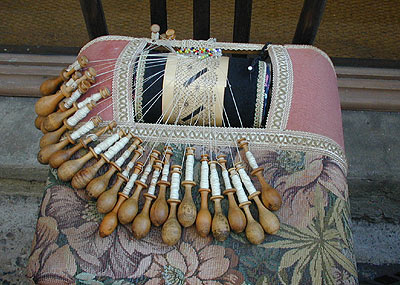
We also saw a mechanical lacemaker.

We continued our walk up the hill to the 11th-12th century Romanesque Cathedral of Notre-Dame.
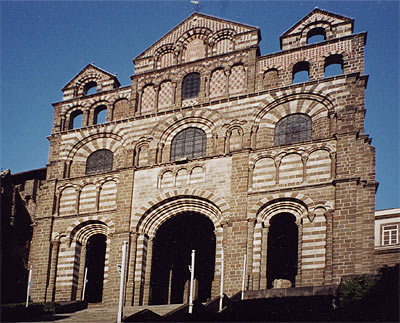
From the side, it shows its Byzantine influence in its cupolas and decoration.
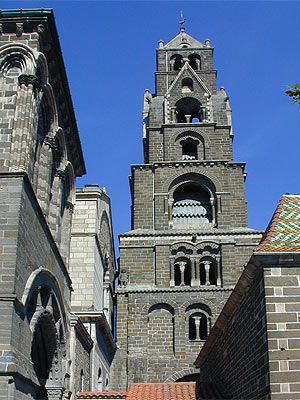
An interesting feature was the Black Madonna, believed to originate from the Byzantine influence of the crusaders. Near the altar was a 17th century copy of one which belonged to Louis IX in the Middle Ages.
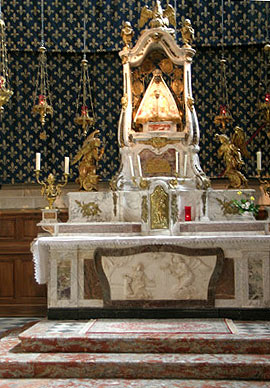
From the church there was a good view of the town below.
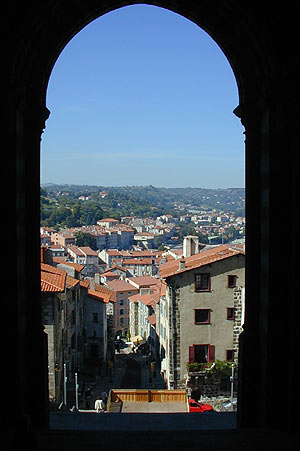
At noon we went to a room in a restaurant for a group lunch. The menu included a starter of garbanzo beans, coucous and veggies. The entree was a sausage and lentil dish, served en famille (family-style.) For dessert, we had a chocolate tart, served with applesauce on the side.
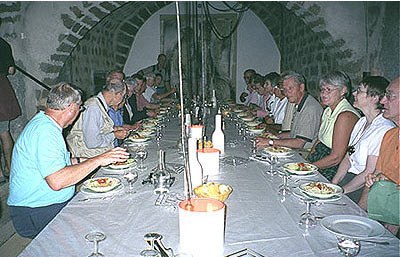

After lunch we walked back to the bus, picked up our luggage, got settled in the hotel and had the rest of the afternoon for free time. Some went to the Crozatier museum, others went shopping, while the more adventurous climbed to the statue of Our Lady of France or to St. Michel-d'Aiguilhe.
On the highest hill in the town, called the Corneille Peak, a red cast-iron statue of Our Lady of France was erected in 1860.
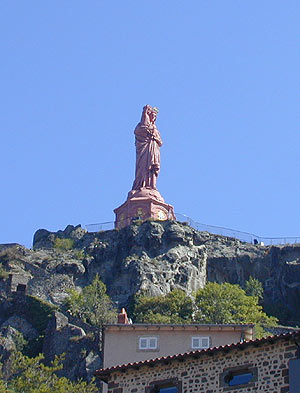
On the outskirts of the town a volcanic needle some some 260 feet high is crowned by a 10th-11th century church, St. Michel-d'Aiguilhe, which was designed to cover the irregular surface of the rock.
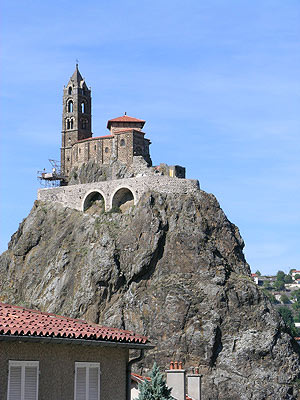
Those who climbed to this church saw the interior.
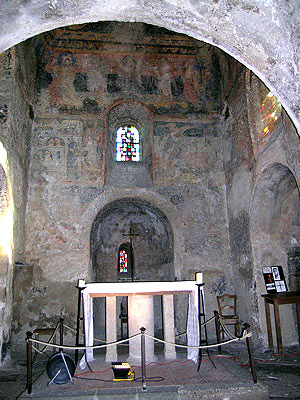
They also saw a great view of the city of Le Puy and the statue of Mary.
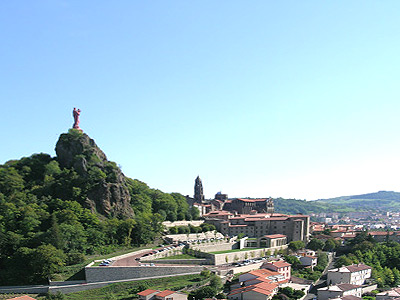
Some spent some time in the park near the Museum.

The Crozatier Museum had excellent displays of lace from the 1700's to the present.



On y va to Conques
